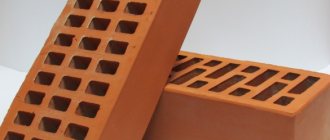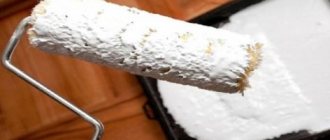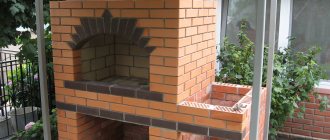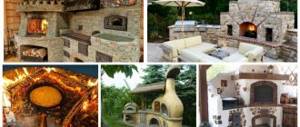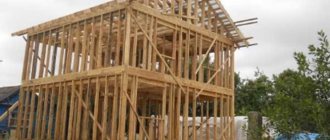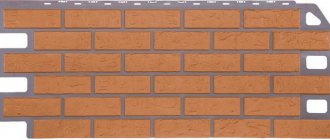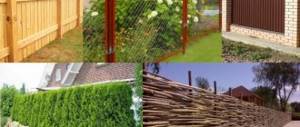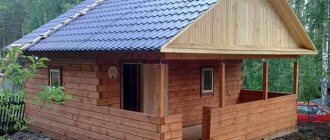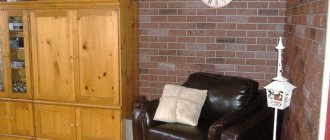- History of Bavarian masonry
- Layout of Bavarian bricks
- Examples of Bavarian masonry
- Video of Bavarian masonry
- Photos of houses (Bavarian masonry)
brick is a traditional and widely used building material that has gained popularity due to its high mechanical strength, heat capacity and weather resistance. But not everyone knows that there is a certain type of brick used exclusively for decorative purposes. We are talking about the so-called Bavarian masonry
, which allows you to create unique color combinations on the facades of buildings.
Bavarian masonry is an open (unplastered) brickwork technology that uses several color shades of brick, creating the illusion of chaotic mixing.
When laying a surface, the mason varies not only the bricks from different color batches, but also their short and long sides.
There is a certain classification of brick sides used when laying out:
- Bed – side with the largest area
- Spoon - medium side
- Poking – the smallest of the sides
Thanks to this combination, a variegated surface without a clearly defined pattern is obtained, which gives it dynamism and originality. That is why Bavarian masonry is often used to decorate building facades, garden paths, solid fuel stoves, fireplaces and other objects. With the help of such masonry, the entire surface can be laid, or only part of it, for example, a corner of a house, a cornice or window frame. One of the most fashionable options for Bavarian masonry is continuous cladding of the interior walls of a house or apartment when creating a “loft” design style.
The traditional colors of Bavarian masonry are red, terracotta and brown, but today its palette has expanded and can include, for example, beige, gray and blue tones - up to eight shades inclusive. The surface of the brick does not have to be smooth: it can also be embossed, the main thing is not to use too many colors for the work so that the pattern is not lost against the heterogeneous background of the cladding.
In order for Bavarian masonry to withstand temperature changes and precipitation, it must have the following properties: single size (250x120x65 mm), strength index - M150, frost resistance (number of seasonal cycles) - F50; water absorption – no more than 12%.
History of Bavarian masonry
Bavarian masonry was born in Germany in the seventeenth century, when it was difficult to achieve one color scheme for a large number of bricks. A solution was found when masons began mixing bricks from different batches, creating unique multi-colored combinations on the facades of buildings. Over time, the technology of “variegated” brick layout became more complicated due to a system of certain rules, turning into a separate decorative trend that is still popular today.
There are several types of Bavarian masonry:
- Classic, consisting of bricks of four colors
- Two-color
- Multicolor, using up to eight color shades
Varieties of Bavarian masonry
If you decide to make a house out of brick, Bavarian masonry will give it respectability and elegance.
If you decide to make a house out of brick, Bavarian masonry will give it respectability and elegance. In this case, you can use several design options:
DIY template for laying bricks
- When decorating the facade, it is not necessary to make the whole house colorful. You can combine areas of plain and colored masonry. For example, from a single-color brick of a lighter or darker shade, you can lay out pilasters in the corners of the house, frame window and door openings, make decorative elements near the main entrance and dividing horizontal belts. The remaining planes of the facade are decorated with colored Bavarian masonry. If the master is proficient in the technique of laying bricks in a herringbone pattern, then individual elements of the house can be faced in this way.
- Also, for laying the facade, you can use several color combinations of Bavarian masonry. For example, sand, light beige and brown shades of brick are used to decorate corners and part of the walls under window openings, and the rest of the walls are made of brick in red-brown and dark brown tones. When using this design option, you should strive to ensure that the colors in both layout options combine well with each other.
- A house in which the ground floor or first floor is decorated with Bavarian masonry, and the remaining floors are lined with plain brick, looks very impressive, but for decorative elements and the design of openings, some of the colors that were used in the masonry of the lower tier are used.
Layout of Bavarian bricks
Bavarian masonry technology is based on the following principles:
- The bricks should be the same size and approximately the same quantity.
- It is not allowed to repeat one masonry pattern, for which, before starting work, you can make 5 - 10 large drawings (patterns) of the future cladding to create the impression of chaos. In this case, it is worth deciding on the main color, and then selecting contrasting or similar colors. There should not be joints of bricks of the same shade.
To create a classic decor from Bavarian bricks, evenly distributed over the surface, you should take bricks not from one pallet, but from several. The traditional option is to make a cladding pattern in the first row, and then duplicate it in the next, repeating the sequence of laying bricks of different colors. A more difficult option is to follow pre-prepared patterns. An interesting effect is obtained by combining glass-colored bricks with terracotta, chocolate and dark chocolate shades, if all the bricks are “visibly” dark.
Features of Bavarian masonry
The main feature of Bavarian brick masonry is the prohibition on laying two bricks of the same shade next to each other. The color range of Bavarian masonry facing bricks is varied, the basic colors are:
- white;
- grey;
- terracotta;
- brown.
Each color set contains 3-4 tones, although some manufacturers create collections of 5 different tones. Additional attractiveness is provided by the use of a contrasting fugue for seams; a light fugue on a dark background and a dark one on a light one look especially impressive.
Bavarian bricklaying is used as cladding for existing and under construction buildings; there are some nuances here:
- If masonry is carried out simultaneously with insulation, it is first necessary to check the width and load-bearing capacity of the foundation. Since the weight of the masonry with mortar reaches 2200 kg/m3, the underground part of the wall may have to be strengthened or expanded.
- To secure the cladding to the existing wall, use ready-made anchors or reinforcement, which are fixed to the mortar in pre-drilled holes. Anchors should not be inserted into masonry joints.
- When constructing the load-bearing part of the wall simultaneously with cladding using the well masonry method, ligation is performed with industrial metal or plastic anchors, or reinforcing mesh laid in the seams at intervals of 900...1200 mm.
- Before starting work, inexperienced amateur masons should mix all the products in the batch and try to lay out the composition on a flat area, and after obtaining the required combinations, carry out the masonry. The masonry is carried out using warm mortars, in which a fine fraction of expanded clay or perlite sand is used as a filler to prevent the formation of cold bridges.
Photos of houses (Bavarian masonry)
Variations of Bavarian masonry
There are several methods of Bavarian masonry, but experts recommend that inexperienced developers give preference to the classic version, which involves the use of a combination of the following shades:
• red;
• dark red;
• brown;
• dark brown.
A good and simple option is to design a building with the following arrangement of shades: corner elements, platbands, cornices are made in dark colors, walls – in light colors.
When choosing two-color masonry, you should choose contrasting tones to make the design look more impressive. A slight difference in tone will not give the desired effect.
The multi-color option involves a combination of eight or more colors. As a rule, such masonry has an ornament or a certain pattern that is repeated on every wall of the house. The technology is very complex, only specialists can do it.
Preparing for Bavarian masonry
Before buying brick blocks, determine the design of the project. To begin, choose a drawing. The original masonry can be of different shades. More often they stop at 2-3 shades to give the facade an original look. Bavarian brick can be laid out in a “herringbone” or “pyramid” pattern and the pattern can be repeated several times along the entire wall, if the size allows. The design varies and depends on the designer’s imagination.
The main thing is to understand that Bavarian masonry is used for cladding or the outer row of a brick wall. In the first case, foam tiles are used to insulate the house, although this method is considered ineffective. Other options for insulation are plastering walls, gluing slabs, sealing cracks and finishing with Bavarian masonry (a costly and uneconomical method).
Brick Braer Bavarian masonry
Braer Brick Factory is a large brick manufacturer located in the Tula region. Currently, the Braer plant produces all existing ceramic bricks of any format. Braer Bavarian masonry is produced using modern European equipment, which has virtually no analogues on the Russian market. In addition, Bavarian brick Braer undergoes quality testing in the plant’s laboratories before the release of each batch. Braer facing bricks comply with all quality standards GOST 530 2012. The price of Braer Bavarian bricks ranges from 20-30 rubles per brick. You can see all the products of this plant on the plant’s website - Braer plant official website. Bricks from this manufacturer occupy a worthy place in the construction market in their price category.
Buy Bavarian masonry Braer in the product catalog
Use of Bavarian masonry
This technique is used not only for buildings. With its help, they create a unique landscape design for the entire yard. It is suitable for decoration like no other type. Unique masonry allows you to focus on certain areas of the house or yard. Just imagine what a Bavarian-style pool, patio or fountain would look like? This type of masonry combines beauty and sophistication, nobility and elegance. Bavarian bricklaying, a photo of which is provided for viewing on the website, allows you to clearly see the effectiveness of the technique. It is very easy to make your home individually beautiful with its help.
Finishing of gate posts with Bavarian masonry with an aged effect
Using this technique, gazebos and paths on the site are decorated. Thanks to the large availability of shades and the ability to place bricks in different ways, the Bavarian style has gained universal recognition. Many people use the brayer for a variety of purposes. Bavarian masonry, the photo of which shows all the beauty of the style, is used in the most unpredictable places, creating an incomparable appearance of the structure. For example, Bavarian masonry on fences emphasizes the elegance of the yard. It fits harmoniously into the landscape of the site, allowing you to create an incomparable pattern.
Seating space in the home garden highlighted by Bavarian brickwork
Decoration of the local area - paths made of Bavarian masonry
Bavarian masonry methods
Bavarian masonry can usually be done in two ways
- an arbitrary pattern that is obtained by alternating bricks from all pallets;
- making the combination chaotic thanks to pre-thought-out patterns.
In the first option, the first row should include bricks of all colors, then make sure that adjacent bricks are not the same color, and the vertical seams across the row should match.
Important! To avoid uniform stains on the façade, laying must be done from all pallets at the same time.
In the second option, the Bavarian bricklaying scheme is thought out in advance, sketches, so-called patterns, are made in quantities of up to 10-12 pieces. You can draw them yourself, or using a computer program. The patterns are rectangular sketches of a combination of bricks, taking into account the requirements of Bavarian masonry, that is, randomness, lack of repetition. Then the patterns are repeated in random order. This option is more complex, requires skills, patience, and is more time-consuming, but the result will be much more effective.
The latest design innovation has been the combination of light combinations, to which one dark shade of the same color and one contrasting one have been added. Examples include combining gray shades and adding blue brick, or combining blue with straw yellow shades.
Advantages of Bavarian masonry:
- gives your building a decorative touch, making the built house unique and different from others;
- wall cladding increases the sound and heat insulation of the building;
- brick cladding is fire resistant.
Advantages of Bavarian masonry
Using bricks from Kerma to perform BC has the following advantages:
- uniqueness of the exterior of the designed objects;
- additional thermal insulation (if the external walls of the house are cladding);
- improved sound insulation;
- resistance to atmospheric precipitation.
The history of the appearance of the German style
The technology for making bricks in the mid-19th century, when its mass production began for construction needs, was not perfect, although it was a breakthrough in comparison with manual production. Therefore, each batch that was unloaded from the furnace of one plant had different shades of color. Accordingly, the buildings erected from this material turned out to be colorful. Mass development of this type was carried out throughout Europe, including in Bavaria (Germany). This is how the masonry of variegated bricks received the name Bavarian.
Nowadays, thanks to advanced technologies, it is possible to produce bricks with any given parameters of color, shape and texture. In recent years, country style has become a trend in architectural design. This is what determined the popularity of Bavarian masonry at the present time.
The principle of Bavarian brick production technology
When producing colored bricks for Bavarian masonry, flash firing technology is used. The bottom line is that during the firing of the workpiece, carbon is released. When it hits the hot surface of a product, it becomes a catalyst for a chemical coloring reaction. The more carbon, the more intense the color. At the last stage, a portion of oxygen is added to the furnace, which leads to a sharp increase in temperature and the release of certain chemicals from the clay, which is the raw material for bricks. As a result, the color of the workpiece changes.
Modern technologies used in the production of bricks make it possible to accurately verify process parameters and obtain the planned color shades of manufactured products. In addition, innovative developments used in firing technology make it possible to increase the strength of bricks and reduce their susceptibility to moisture.
Choosing bricks for Bavarian masonry
To ensure high-quality masonry and create an original ornament, you should choose the “right” brick. For this method of framing, preference should be given to facing bricks. It should be smooth, have a flat and chip-free surface. Special relief brick is also widely used, but its surface has regular geometric shapes.
Neat basement finishing with Bavarian smooth brick
Buy bricks of high quality. Today, many manufacturers of building materials have bricks for Bavarian masonry in their arsenal. But, unfortunately, not all entrepreneurs use the right technology to make it. Violation of production techniques leads to the production of material of inadequate quality. Therefore, when purchasing, you should be careful about the quality of the material.
Harmonious combination of Bavarian masonry with white elements on the facade
The color palette of bricks is impressive in its diversity. Today you can purchase material from the classic red shade to yellow and blue.
Luxurious high brick fence with Bavarian masonry
The cost of material for Bavarian masonry is not much higher than for facing bricks. The material can also be purchased simultaneously with the brick placement scheme. But still, to create an individual style, you should seek help from professionals who will develop an incomparable sketch.
Perfect façade finishing with Bavarian masonry
